This step-by-step tutorial will show you how to make a photo look like a watercolor painting in Photoshop. We will use a couple of filters, a Smart Blur, blending modes, a paper texture overlay, and some brushes to create the watercolor effect in Photoshop.
So if you’re looking to turn your images into a watercolor painting, read on!
How to Create a Watercolor Effect in Photoshop
Watercolor paintings are made by mixing water-soluble paint with water. The textured paper absorbs the color as the water dries.
Watercolors are soft and luminous. The color is almost transparent, letting the texture of the paper show through. The colors bleed into each other on the edges. They also often have bright, vibrant colors. The subject can go all the way to the edge of the paper. Sometimes they even seem to emerge from the white background.
The drips and smudges add an ethereal quality. The paintings are dreamlike or otherworldly.

Gather Your Materials
Just like a watercolor artist, you will need some paper and brushes.
Download a digital paper texture. Unsplash has many free options. Search “watercolor paper” and choose the one you like.
I used a simple white textured paper by NordWood Themes. You can also use colored paper or paper with watercolor brush strokes. These will interact with the colors in your photo as we change the blending modes.
You also need some watercolor brushes for Photoshop. There are many free options. And you can find them if you search for “watercolor brushes.” I used Wet PS Brushes from Brusheezy. I will show you how to load the brushes into Photoshop below.
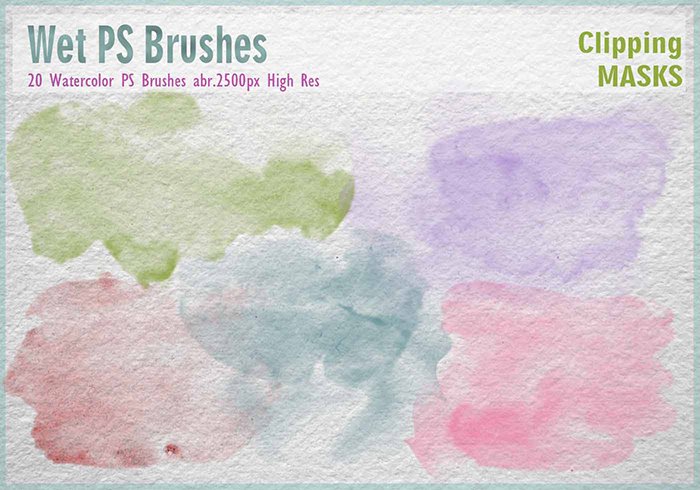
Don’t you feel like a watercolor painter? Now that we have all the materials we need, let’s jump into Photoshop.
How to Add a Watercolor Painting Effect
Follow along to create a watercolor painting in Photoshop. There are a lot of small steps, but none of them are difficult. Let’s start by opening an image and installing the brushes.
Step 1. Open Photo in Adobe Photoshop
Start by opening a photo in Photoshop. You can send one from Lightroom or the File drop-down menu. Select File > Open (Ctrl/Command + O). Then, navigate to the file.
Click Open.
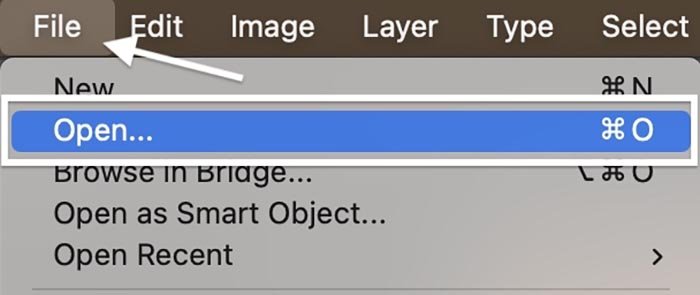
Step 2. Change Image Mode
To use the filter gallery later, you need to change your photo to an 8-bit image. An 8-bit file is smaller and has less color variety. But that does not matter because of the effect we are creating.
Go to the Image drop-down menu and select Image > Mode > 8 Bits/Channel. Your file may already be 8-bits.

Step 3. Copy the Background Layer
Go to the Layer drop-down menu and select Layer > New > Layer via Copy (Ctrl/Command + J). Rename this layer “Watercolor Effect.”

Then turn off the Background by clicking on the eye icon. We will add the blur in a minute.
Step 4. Convert Layer to a Smart Object
Convert the Watercolor Effect layer to a smart object. This lets us add effects like blur and then go back and change the result later.
Go to the Layer drop-down menu and choose Layer > Smart Objects > Convert to Smart Object.

Step 5. Install Brushes
Next, import the brushes. If the brushes you downloaded are in a ZIP file, double-click it to expand the folder.

Go to the Window drop-down menu and select Window > Brushes. Click the three-line icon in the top-right corner of the Brush panel. Select “Import Brushes” from the menu.
Navigate to the brush file you downloaded. Our example icon says, “Brushes.” Click Open.
In the list of brushes, there should now be a folder labeled with the name of your watercolor brush collection (i.e., “20 Watercolor Brushes”). We will use these towards the end of the tutorial.

Step 6. Add Watercolor Effects to the Photo
Watercolor paintings have a soft blur. We will use a couple of Photoshop filters to get the effect.
Go to the Filter drop-down menu and select Filter > Filter Gallery. If this option is greyed out, make sure you converted the file to 8-bit mode.
Open the Artistic menu. We will apply two of the filters.
First, click the Watercolor Effect. (You could also use the Dry Brush filter.) Set Brush Detail to 14, Shadow Detail to 0, and Texture to 3. Then click the plus icon at the bottom of the window.
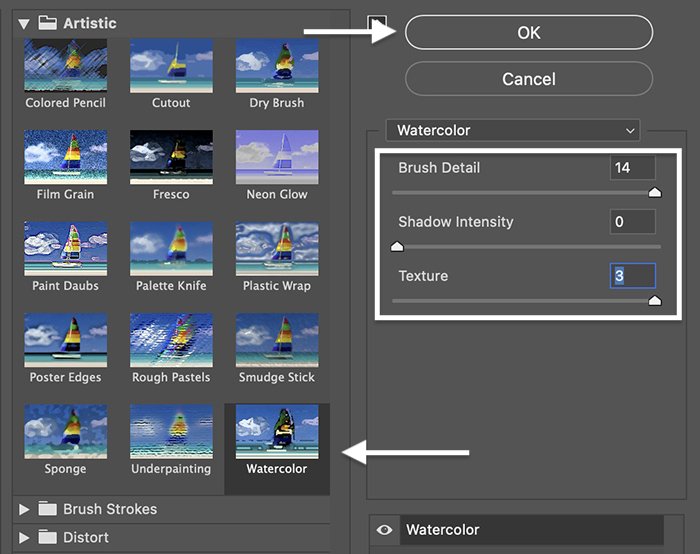
Then, open the Sketch menu. Set the Fiber Length to 35, the Brightness to 65, and the Contrast to 65. Feel free to experiment with these settings.
Click OK.

Step 7. Add a Smart Blur
With the Watercolor Effect layer selected, click the Filter menu again. Select Filter > Blur > Smart Blur. Move the Radius slider to 15 and the Threshold slider to 100. Change Quality to High.
Click OK.

Step 8. Add Sketched Edges
The last filter to add is Find Edges. This makes it look like you sketched the picture before painting. Go to the Filter drop-down menu. Choose Filter > Stylize > Find Edges.
You should have three Smart Filters in the layers panel—Find Edges, Smart Blur, and Filter Gallery.

Step 9. Change Blend Modes
We will blend each Smart Filter a little differently using blending modes. Let’s start with the Filter Gallery. Double-click on the icon to the right of the name. Change the blending mode to Soft Light.
Click OK.
Double-click on the icon to the right of Smart Blur. Choose the Screen blend mode and set the Opacity to 50%.
Click OK.
Finally, double-click the icon to the right of Find Edges. Change the mode to Multiply and the Opacity to 50%.
Click OK.

Step 10. Add Paper Texture
To add the paper texture you downloaded earlier, go to the File drop-down menu. Choose File > Place Embedded. Navigate to the file.
Resize the Texture layer until it covers the entire photo. Change the blending mode to Multiply. If you chose colored paper, another blending mode like Soft Light might look better.
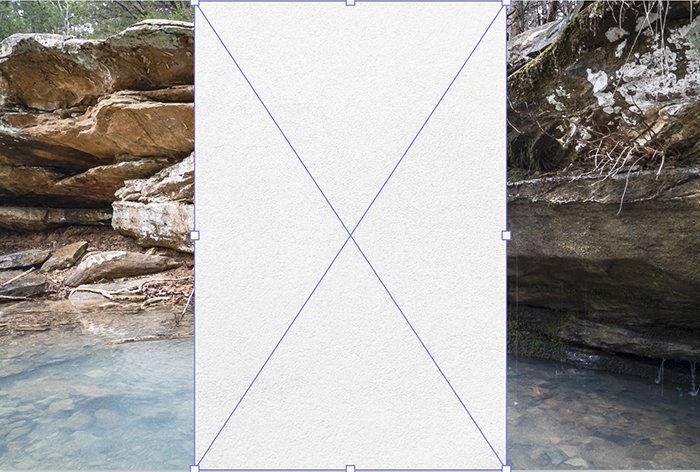
Step 11. Add a Layer Mask
Go back to the Watercolor Effect layer and add a layer mask. Go to the Layer drop-down menu. Choose Layer > Layer Mask > Hide All.

Step 12. Paint!
Select the Layer mask and the Brush tool. Set your foreground color to white.
Paint using one of the brushes that you downloaded earlier. Set Opacity and Flow to 100% in the Options toolbar.

Paint a little at a time and use more than one brush of various sizes. You will see the watercolor picture gradually appear.
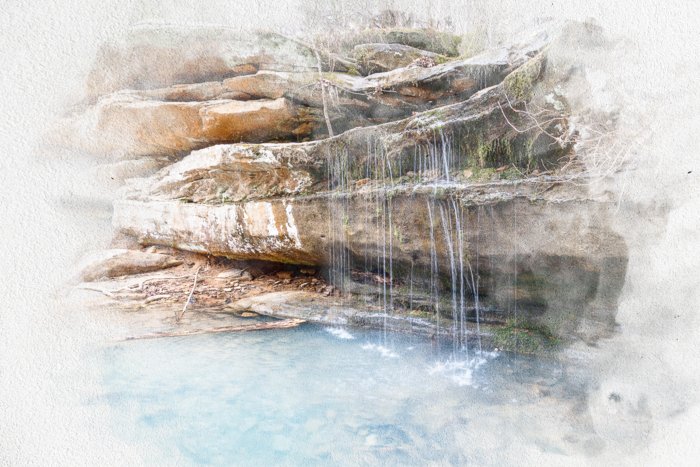
Conclusion—How to Create a Watercolor Effect in Photoshop
This tutorial showed you how to create a watercolor effect in Photoshop. We used a few filters, a texture overlay, and brushes. Some of the tools may have been new to you, but each step is easy. And there is room to experiment—especially when painting with watercolor paintbrushes. Be creative and enjoy!
Try out our Digital Dreamworlds e-book to learn more about blend modes and create stunning photo collages!
